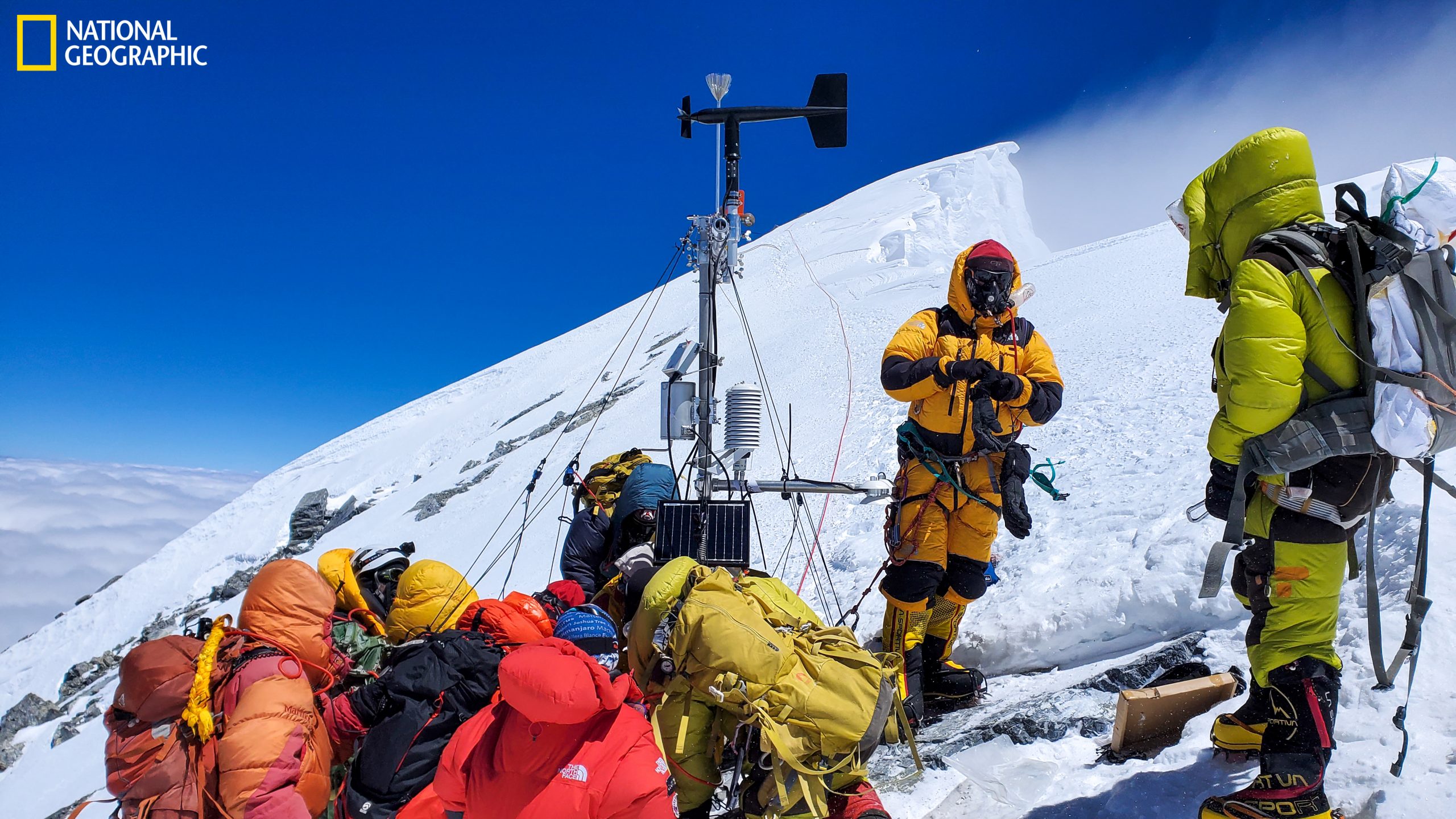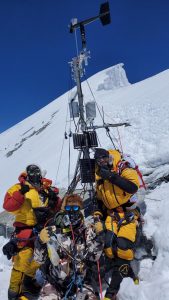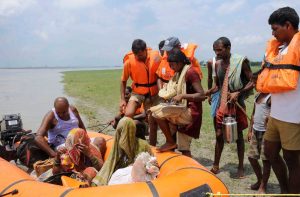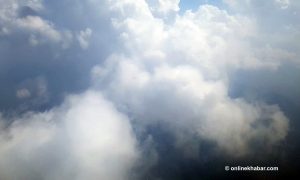On a cold, windy morning of May 9, a team of Nepali climbers led by Tenzing Gyalzen Sherpa reached Bishop’s rock, a slab of rock just below the summit of Everest. With him were 14 other climbers from in and around the Khumbu region. Unlike regular summits, they were there for a specific purpose — to set up a weather station just below the summit of Mount Everest at an altitude of 8,810 metres.
The weather was supposed to clear with low winds. But, it became clear as they ascended from camp 4 that this was not the case. High winds made it difficult for them to move as quickly as they wanted, and it was clear by the time they arrived at Bishop’s rock that the task ahead would be difficult.
In the spring of 2019, most of them had climbed up to the balcony, to set up a high-tech weather station. Even then, they had to face similar issues. But, this year, Tenzing Gyalzen Sherpa and others came prepared that guaranteed success as they hope the project will benefit not only mountaineers but Nepalis in general, and the meteorological academicians and students in particular.
Creating a history
“We knew that cold was going to be our biggest challenge. So we came prepared and we warmed batteries for the drill so that we could work smoothly. But, it wasn’t as easy as we expected it to be,” says Sherpa, the expedition leader who also works as an electrician in the Khumbu region.
The wind was so challenging that some of the team members were contemplating going down. There was a talk about leaving the equipment on Bishop rock and coming back. But, Sherpa was determined and he refused to return. He and a few others decided to stay and fixed the weather station.
Despite the challenges, they were successful and created a history. But, not without drama, as Sherpa says they were not able to fix a data locker, which meant that the station would not transmit information.
“Tom (Mathews) was sad and had descended, but I didn’t want to lose hope. I arranged the wire and hope it worked and when we reached camp 4 and got a radio from Baker (Perry) who told us it worked, we all jumped with joy. People had tears in their eyes,” says Sherpa.
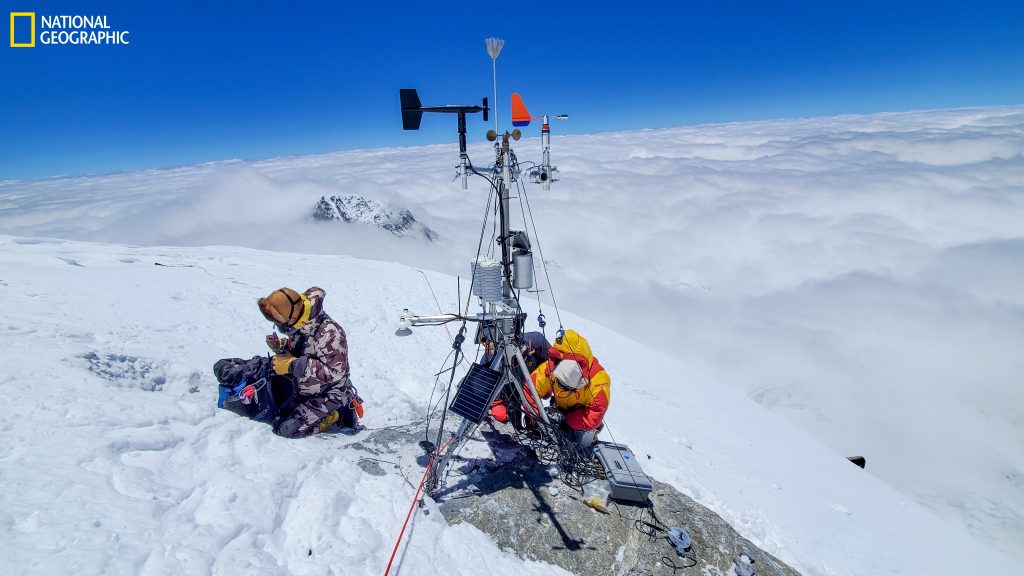
With that, the weather station is up on Everest and is transmitting live data available for everyone to see. Through the data, climate scientists aim to study climate change and its effects in the Himalayas and also aim to help mountaineers by providing them with real-time data on what is happening high up on the mountain. With the quantitative data on wind speed, temperature, relative humidity and air pressure, they will know how rapidly the highest place on earth is changing as they aim to raise awareness among people throughout the world.
“This is frontier science as we’re pushing the limit,” says climate scientist Baker Perry, one of the leaders of the project. “There is a huge gap in our understanding of the weather in the highest place on earth so much so that we know more about the weather on Mars than the weather on the summit of Mount Everest. We hope this project changes that.”
The initiation
The project started in 2019 and involves different parties and over 30 scientists. The project is undertaken by the National Geographic Society, working in partnership with Tribhuvan University and the Department of Hydrology and Meteorology and is funded by Rolex.
They have set up weather stations at different elevations. The first is at Phortse at an elevation of 3,810 metres. The second is at Everest base camp at an altitude of 5,315 metres; the third is a camp 2 at 6,464 metres, the fourth is on the South Col at 7,965 metres and the last is just below the summit at 8,810 metres.
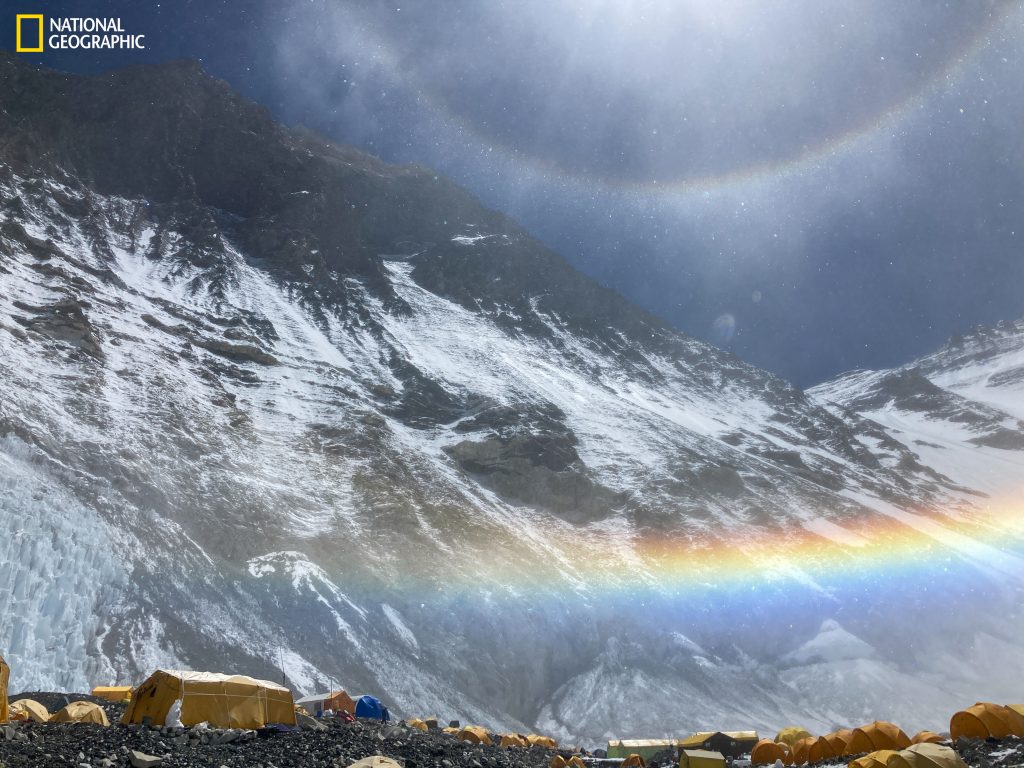
In 2019, the team had set up a weather station on a place called the balcony on Everest at an altitude of 8,430 metres but that stopped transmitting on January 20, 2020, around seven months after it was installed.
“It was completely destroyed,” says Sherpa who had gone to take stock of the station in 2021. “A jetstream had broken it.”
Empowering Nepalis
This year’s expedition was focused on replacing the weather station on the balcony and undertaking minor repairs on the ones at base camp and camp 2.
“Yes, our main goal was to replace that station. But, with that, we also wanted to build the capacity of our Nepali team who have helped us since 2019,” says Perry.
He says as neither he nor the co-leader of this project Tom Mathews could come to Nepal on a regular basis, it was important for them to use Nepali resource persons if they wanted to maintain these stations for a long time.
Perry says while the weather stations below the South Col should stand for a long time, those on the South Col and Bishop’s rock do not have a set time as these are on extreme altitudes.
“We improved the design on the tripod and wind sensors, but since we can only test it in the Himalayas, we don’t know how long these will last,” says Perry.

Nepal’s contribution and project’s importance
One of the partners of the project is the Central Department of Hydrology and Meteorology of Tribhuvan University. The department chief Deepak Aryal says this project is very important, especially for academic purposes.
“This was purely a scientific research project that would be beneficial for students and researchers in the country to study weather, climate and the glacier,” says Aryal.
A Nepali climate scientist who works on high-altitude meteorology and glaciology, Arbindra Khadka, was also a part of the project. He says the aim of the station is mainly to contribute to high-altitude research.
“Every year, a lot of people come to the country to conduct research about climate change and the future of water in the region. These weather stations will help us study this in detail as we now have quantitative data,” says Khadka, who is pursuing his PhD in glaciology.
Perry agrees with Khadka and adds that they hope to understand what is driving the loss of the snow and ice on the mountain.
“This was totally worth the risk as it will help us study the water towers and the glaciers that help sustain a billion people downstream,” says Perry.
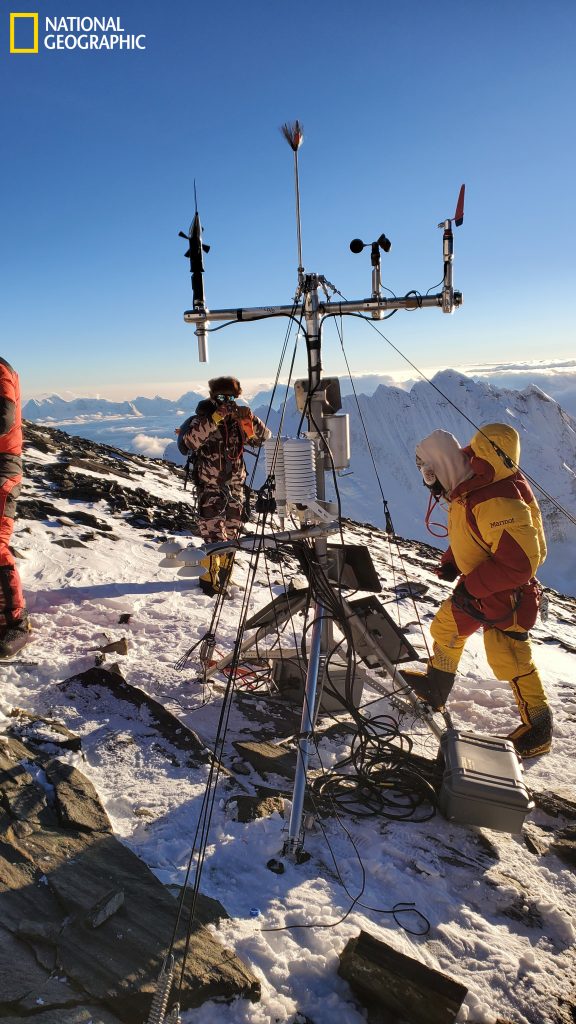
Key to understanding the mystery
The weather stations have produced some interesting research. Perry says there has been research on how sunshine is affecting the glacier high up on the mountain.
“Temperatures are well below sub-zero, but the glacier is still melting. The sublimation is huge,” says Perry.
He says they are also learning that due to low humidity in the winter, the sublimation is even present during the winter even when temperatures are well below freezing.
“This shows that the highest elevation in the Himalayas may be more vulnerable to climate change than lower areas. The picture is quite glum when it comes to the climate crisis,” says Perry.
Aryal, from TU, says he hopes that due to the availability of real-time quantifiable data, policymakers can draft favourable policies. But, because Nepal’s policymakers are not visionaries, he is not too hopeful.
“People don’t take the climate crisis seriously, I hope we, at the university, can contribute to research bringing light to the issue about how bad the situation is and the policymakers take note of it,” says Aryal.
The weather station will also help the mountaineers by providing real-time data on the upper parts of the mountain. Most deaths on Everest mostly occurred due to people climbing in poor weather. Now with real-time data on the weather on camp 2, camp 4 and the summit, Perry and Khadka hope lives will be saved.
“We’re hoping this weather station makes the forecast system better because if we have continuous data, it will help hundreds of climbers who come with the hope of summitting Everest,” says Khadka.
The station on Bishop rock will also monitor the lower jetstream that will help climate scientists see changes in the global weather system.
Khadka says people are conducting research on moisture in the air around the summit and how it affects the build-up of moisture.
“Interesting research is being done with the help of these weather stations about the glacier and the cryosphere. Scientists are also looking at the weather when people are climbing Everest without the use of bottled oxygen. If the station on Bishop rock can last for a year, we can even study human physiology,” says Khadka.
With a lot of avenues for research, scientists in both Nepal and abroad hope they are able to study new aspects of climate change.
“It’s promising and we’re looking forward to working with Nepali researchers and scientists to bring more information out to the public,” says Baker.
PERMITTED USE: These images have been provided at no charge for one-time use for coverage or promotion of the May 2022 expedition of Mount Everest supported by National Geographic and Rolex through their Perpetual Planet Expeditions.
Copying, distribution, archiving, sublicensing, sale, or resale of the image is prohibited.



